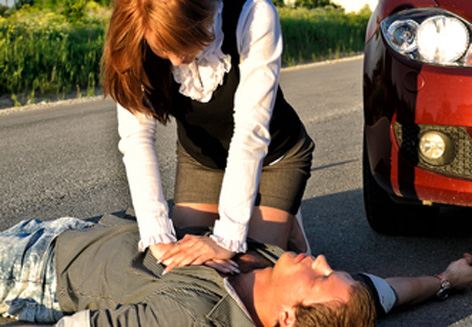According to a recent publication of the German Society for Anaesthesiology and Intensive Care Medicine (Deutschen Gesellschaft für Anästhesiologie und Intensivmedizin DGAI), only one third of by-standers dare to start CPR on a person in cardiac arrest. And those numbers are even worse in rural areas.
The current German survival rate of 10% could be increased considerably if bystanders were less hesitant. And Germany does not come in last in this statistic, Switzerland has similar numbers. The countries with the highest involvement rates are Scandinavian countries: in Norway 70% of bystanders start CPR!
Simple measure such as making CPR training part of a school’s curriculum and training as many employees at a workplace in CPR, not just a few selected first aiders, already make a big difference. A study by the University of Würzburg found that participants forgot 50% of the taught material within 2 years, so regularly attending refresher courses has to be part of any approach increasing survival rates after cardiac arrest. Other simple approaches to raise awareness of this topics amongst the public include CPR training as part of the driving license qualification (well done Switzerland) or mass training events such as Restart A Heart Day. Since 2015, Healthy And Safe Away From Home together with the Samariterverein Thalwil runs an annual Restart A Heart Day inviting both Swiss and international community members to learn the basic steps of CPR while attending the village market or doing their weekend shopping. Healthy And Safe Away From Home has additionally developed a corporate programme teaching CPR in less than 60 minutes while still allowing every attendees to practice their chest compression skills in these short trainings. A CPR training without a practical component is not sufficient for bystanders to understand how to perform CPR.
Posted on May 26, 2017 by Luitgard Holzleg
This entry was posted in Blog, News and tagged bystander CPR, cardiac arrest, chest compressions, cpr, hands-only CPR. Bookmark the permalink.

